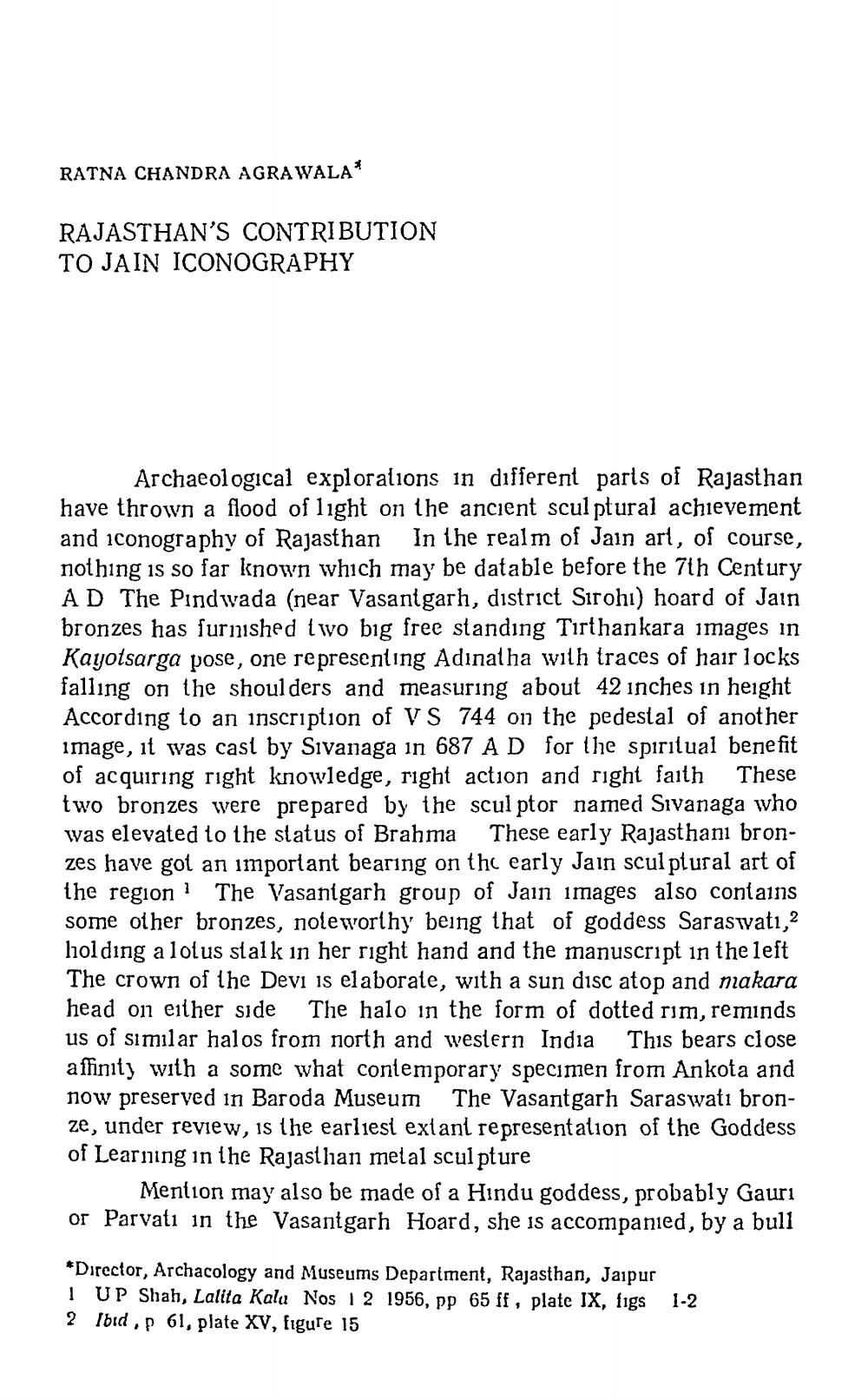________________
RATNA CHANDRA AGRAWALA*
RAJASTHAN'S CONTRIBUTION TO JAIN ICONOGRAPHY
These
Archaeological explorations in different parts of Rajasthan have thrown a flood of light on the ancient sculptural achievement and iconography of Rajasthan In the realm of Jain art, of course, nothing is so far known which may be datable before the 7th Century AD The Pindwada (near Vasantgarh, district Sirohi) hoard of Jain bronzes has furnished two big free standing Tirthankara images in Kayotsarga pose, one representing Adinatha with traces of hair locks falling on the shoulders and measuring about 42 inches in height According to an inscription of VS 744 on the pedestal of another image, it was cast by Sivanaga in 687 A D for the spiritual benefit of acquiring right knowledge, right action and right faith two bronzes were prepared by the sculptor named Sivanaga who was elevated to the status of Brahma These early Rajasthani bronzes have got an important bearing on the early Jain sculptural art of the region 1 The Vasantgarh group of Jain images also contains some other bronzes, noteworthy being that of goddess Saraswati,2 holding a lotus stalk in her right hand and the manuscript in the left The crown of the Devi is elaborate, with a sun disc atop and makara head on either side The halo in the form of dotted rim, reminds us of similar halos from north and western India This bears close affinity with a some what contemporary specimen from Ankota and now preserved in Baroda Museum The Vasantgarh Saraswati bronze, under review, is the earliest extant representation of the Goddess of Learning in the Rajasthan metal sculpture
Mention may also be made of a Hindu goddess, probably Gauri or Parvati in the Vasantgarh Hoard, she is accompanied, by a bull
*Director, Archacology and Museums Department, Rajasthan, Jaipur
1
UP Shah, Lalita Kala Nos 1 2 1956, pp 65 ff, plate IX, figs 2 Ibid, p 61, plate XV, figure 15
1-2




